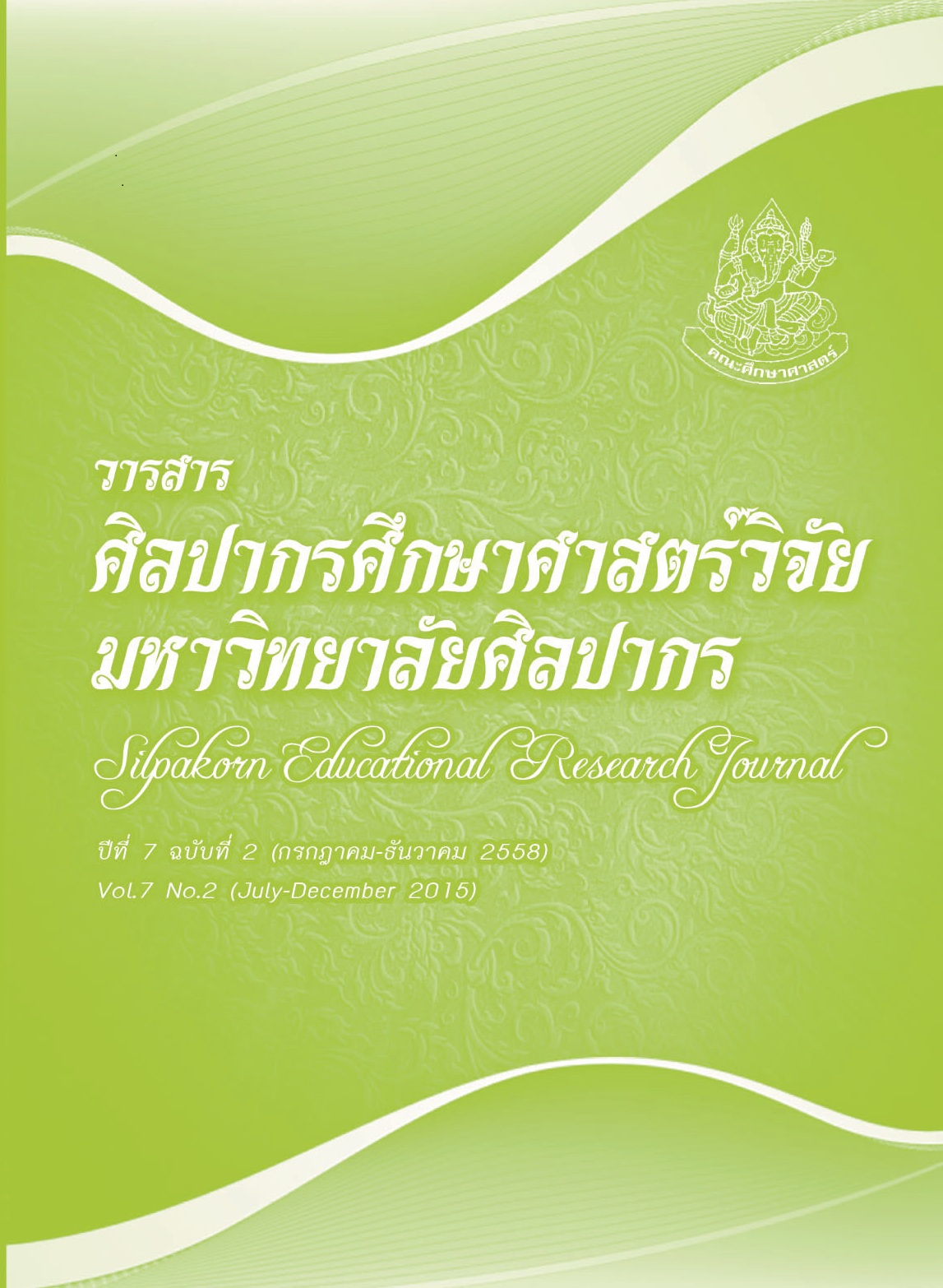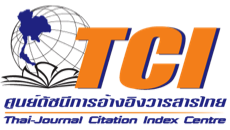การศึกษาแหล่งการเรียนรู้และทักษะทางสังคมของนักศึกษาคณะศึกษาศาสตร์ มหาวิทยาลัยศิลปากร A STUDY ON LEARNING RESOURCES AND SOCIAL SKILLS OF EDUCATION STUDENTS IN SILPAKORN UNIVERSITY
คำสำคัญ:
Social Skills, Learning Resources, Peer Group, Students’ Family, Social Network, School or University Atmosphere and Mass mediaบทคัดย่อ
บทคัดย่อ
การวิจัยครั้งนี้มีวัตถุประสงค์เพื่อศึกษาแหล่งการเรียนรู้และทักษะทางสังคมของนักศึกษาคณะศึกษาศาสตร์ มหาวิทยาลัยศิลปากร ตามการรับรู้ของนักศึกษา โดยใช้วิธีวิจัยเชิงปริมาณและเชิงคุณภาพ กลุ่มตัวอย่างเป็นนักศึกษาคณะศึกษาศาสตร์ มหาวิทยาลัยศิลปากร ปีการศึกษา 2555 การสุ่มกลุ่มตัวอย่างแบ่งเป็น 2 ตอน ตอนที่ 1 จำนวน 318 คน ใช้วิธีสุ่มแบบแบ่งชั้นภูมิ (Stratified Random Sampling) ตอนที่ 2 จำนวน 20 คน เลือกเป็นกรณีตัวอย่างจากนักศึกษา 10 วิชาเอก วิชาเอกละ 2 คน เครื่องมือที่ใช้ในการวิจัยเป็นแบบสอบถาม 1 ฉบับ และแบบสัมภาษณ์ 1 ฉบับ การวิเคราะห์ข้อมูลเชิงปริมาณ ใช้ค่า ร้อยละ (%) ค่าเฉลี่ย () ส่วนเบี่ยงเบนมาตรฐาน (S.D.) การทดสอบค่าที (t-test) และการวิเคราะห์ความแปรปรวนทางเดียว (One-Way ANOVA) การวิเคราะห์ข้อมูลเชิงคุณภาพใช้การวิเคราะห์เนื้อหา
ผลการวิจัยสรุปได้ดังนี้
- ทักษะทางสังคมของนักศึกษาอยู่ในระดับมาก
- ทักษะทางสังคมของนักศึกษาจำแนกตามระดับชั้นการศึกษา ระดับคะแนนเฉลี่ย และ สาขาวิชาเอก แตกต่างกันอย่างมีนัยสำคัญทางสถิติที่ระดับ .05 และ ทักษะทางสังคมของนักศึกษาจำแนกตาม เพศ ไม่แตกต่างกัน
แหล่งการเรียนรู้ที่เอื้อต่อการพัฒนาทักษะทางสังคมนักศึกษามากที่สุด คือ กลุ่มเพื่อน รองลงมา คือ ครอบครัว เครือข่ายสังคมออนไลน์ โรงเรียนหรือสถาบันการศึกษา และ สื่อมวลชน
Abstract
The main purposes of this research were to study the availability of learning resources and social skills of education students in Silpakorn University. It was descriptive research using quantitative and qualitative methodology. Samples were 318 students in Faculty of Education, Silpakorn University in the academic year 2012 derived by stratified random sampling technique for the first phase of study, and for the second phase of study were purposive sampling of 20 students from 10 major of studies each of 2 students. Research instruments used to collect the data were a structured questionnaire, and an interview questionnaire. Data analysis involved fundamental statistical analysis, t-test, and One-Way ANOVA. Content analysis were also used for qualitative data.
The results showed that:
1. The students’ social skills were prevalent at the high level.
2. The students’ social skills as classified by level of education, students’ grade point average, program of study were significantly different at a statistical level of .05, while classified by gender were not significantly different.
3. The learning resources which facilitated the development of students’ social skills according to their awareness were the peer group, students’ family, social network, school or university atmosphere and mass media.





